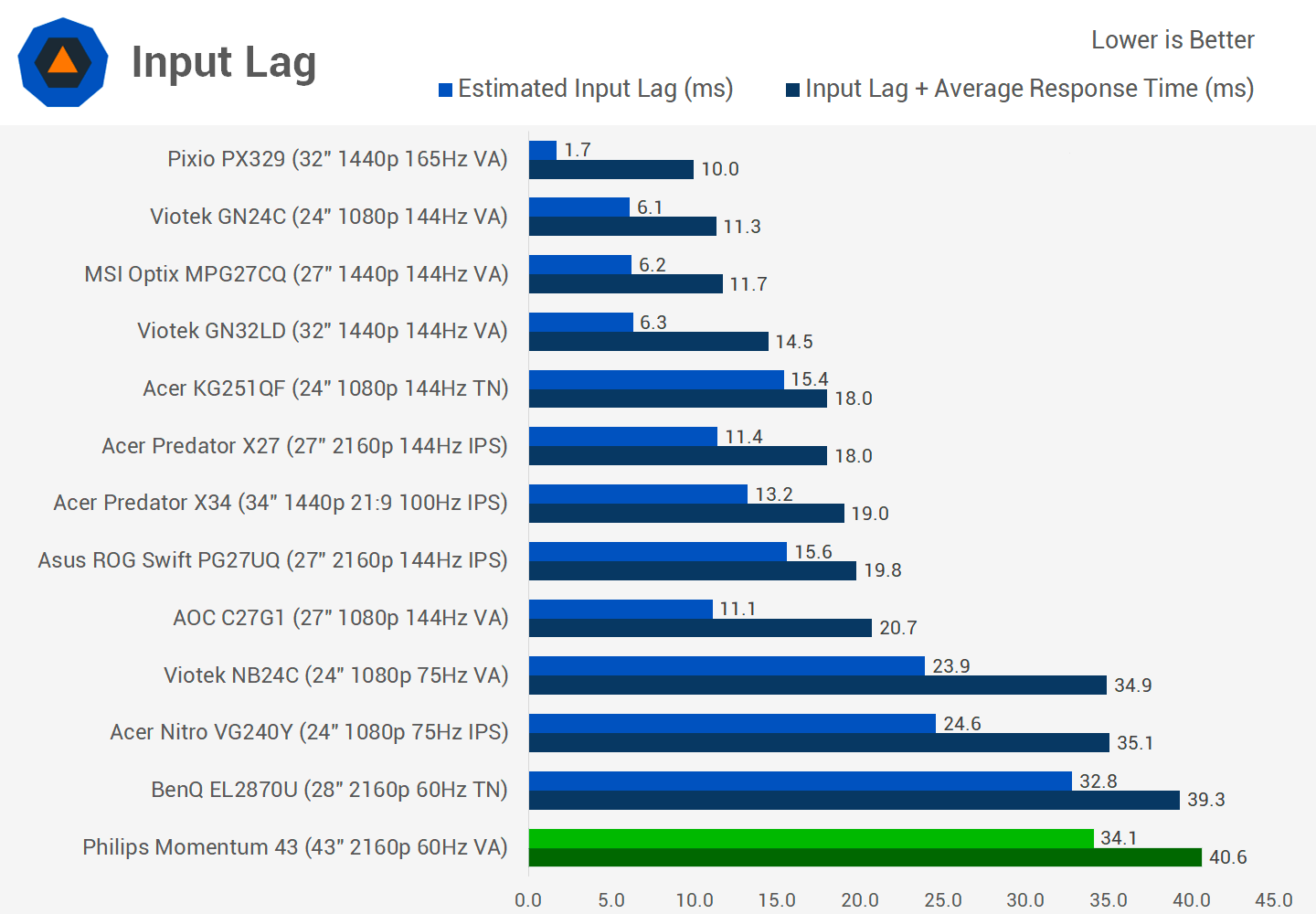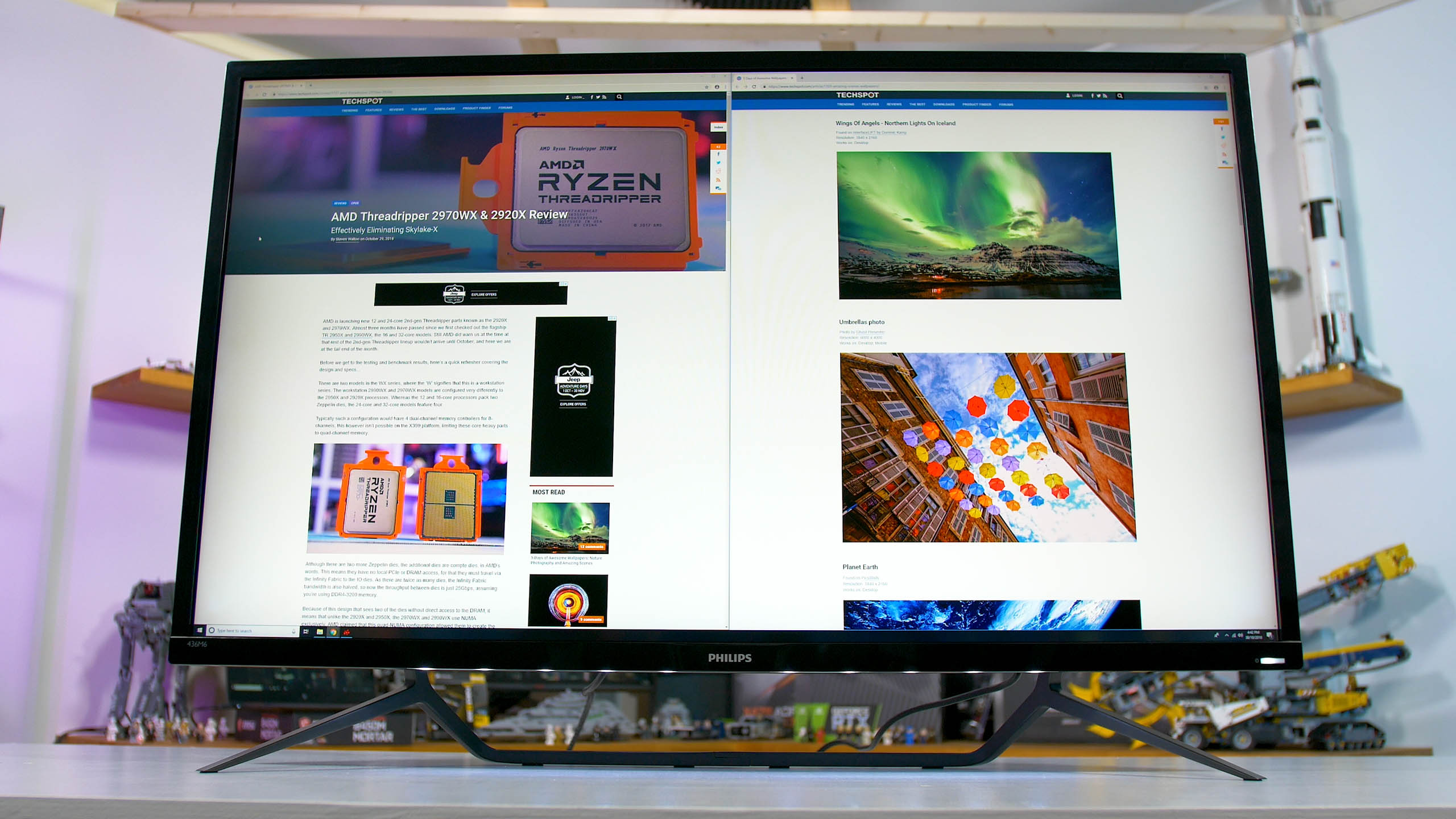SDR Performance, Response Time, Input Lag
As we're looking at a VA panel here, I wasn't expecting fantastic response times. Philips claims a 4ms grey-to-grey transition, which is well below what we typically see from VA panels in practice, so my immediate thought was they're probably fudging that number. However, this particular 43-inch VA panel is actually one of the best VAs for response times; I recorded an average grey-to-grey response of 6.53ms with relatively consistent performance for rises and falls. This is well below the 16.7ms refresh window of the 60 Hz panel, and no single transition comes even close to exceeding it. We're not quite in the ballpark of a good TN but this is definitely a very good result for VA.

With this sort of performance, the Momentum 43 would be well suited to running at 120 Hz, but unfortunately we're capped to just 60 Hz.

Input lag isn't as fantastic with the Momentum 43. Using our standard test conditions, which includes the display in a calibrated state running over DisplayPort at a native resolution with the low input lag mode enabled, I measured lag of approximately 34 ms, and you can add on another 10-15ms when switching the low input lag mode off. This is a very poor input lag result, making this monitor one of the slowest we've tested.
I did see some other reviews claiming input lag that's much better than this, however I couldn't replicate those results from any configuration of settings I tried, so not sure why that's the case.


In terms of SDR brightness and contrast, the display tops out around 560 nits, and delivers a native contrast ratio of around 4500:1, although you can use the dynamic backlight in the SDR mode to increase that contrast ratio further.
SDR color performance out of the box is disappointing for a number of reasons. In its default state, the display delivers an uncalibrated color gamut, so standard sRGB imagery is stretched out to a wider gamut (approximately DCI-P3), which leads to oversaturation. When looking at our saturation and ColorChecker charts, this is quite evident and is the cause of the high average deltaEs.



Default white balance is also a little off, the screen appears to have a slight red tint when viewing whites, and while the average deltaE is reasonable, there's a few issues with the CCT and gamma curves.
Philips does include an sRGB mode, and this tightens up the gamut to sRGB which solves the saturation issue. However the issue with the sRGB mode is it doesn't allow you to change the brightness level, so if you want near accurate colors, you're stuck with a very high 417 nits of brightness. This is quite frankly a ridiculous restriction that makes the sRGB mode completely useless. If you could change the brightness, it would be a great option for those that want near accuracy without a full calibration, but locking the brightness slider is just a dumb oversight or choice on the part of Philips.



If you want to get accurate color performance out of the Momentum 43, you have no choice but to perform a full calibration as there's no other setting in the OSD that allows you to restrict the display to sRGB for SDR usage. The good news is the panel is highly calibrateable and every aspect of its performance can be corrected to an elite standard without sacrificing brightness or contrast ratio, though as you need a software profile to do so, not every app will pay attention to these corrections.
The final area of performance I wanted to explore is uniformity, and it's perhaps the area I was most disappointed in. My Philips Momentum 43 is not particularly uniform and it's visible immediately when viewing any solid colors. There's an obvious dark shadow around the edges of the monitor, which basically causes a vignette effect. This is really disappointing for a high-end display of this size; you're getting entry-level uniformity here and this is something you can't correct.
